New Era for Nuclear Power
Air Date: Week of May 3, 2024

TerraPower’s Natrium reactor, which uses liquid sodium as a coolant, is designed to vary its power output depending on demand. (Photo: Steve Jurvetson, Flickr, CC BY 2.0)
The Biden Administration is helping finance advanced nuclear power reactors and refurbishment of traditional nuclear power stations to promote the generation of zero emission electricity. Some of the new designs incorporate liquid sodium to offer more flexibility in power output to an electrical grid where renewable energy is intermittent. MIT professor Jacopo Buongiorno talks with Host Steve Curwood about nuclear power technology and the implications for public health and safety.
Transcript
CURWOOD: Half of the zero-emission electricity generated for the grid in the U.S. comes from nuclear reactors, and the Biden-Harris administration is aiming to triple nuclear power generation by 2050. The Inflation Reduction Act and other federal funds are providing billions of dollars in loan guarantees to help existing nuclear power plants upgrade to stay in business. Billions more are being deployed to support advanced nuclear reactor designs, from small ones that can use breeder type reactions and theoretically never run out of fuel, to large ones that use liquid metals like sodium as coolants to boost efficiency and flexibility. The administration’s nuclear power program also promotes using locations where coal fired plants have retired. TerraPower, founded by Bill Gates, is using such a site in Kemmerer, Wyoming where it aims to build its sodium-based reactor. Jacopo Buongiorno is a professor of nuclear science and engineering at MIT, and joins us to discuss these developments. Professor Buongiorno, welcome to Living on Earth.
BUONGIORNO: Thank you for having me.
CURWOOD: So in the face of the climate emergency, we have to reduce our reliance on fossil fuels as quickly as possible. So to what extent can nuclear energy play a role in our urgent race to decarbonize?
BUONGIORNO: Nuclear can play a big role, already plays a role, roughly half of our low carbon, or clean electricity at the moment in the United States comes from nuclear. So it already is a big part of our clean energy infrastructure. It can play even a bigger role, and not just on the grid. If you look at the amount of CO2 emissions across all sectors of the economy, the power grid only accounts for roughly one quarter. And what that means is that we need energy technologies that can replace the use of fossil fuels, not just on the grid, but on things like transportation, industry, agriculture, buildings, etc. And the nice thing about nuclear is that it's a fairly versatile energy source. It can give you heat, if you want heat. It can give you electricity if you want electricity. It can give you hydrogen if you need hydrogen, or some kind of synthetic fuel for transportation, so potentially a very, very big role.
CURWOOD: So Professor, can we have a bit of context here? Compared to the nuclear power plants that are online in the United States right now, what's new or revolutionary about TerraPower's Wyoming plant?
BUONGIORNO: That's a great question. The reactor itself is really a different design from the 90-plus plants that are in operation at the moment in the United States. Those plants use water, perhaps the simplest fluid that we can think of as the coolant inside the reactor, whereas the new TerraPower plant will use liquid sodium, a liquid metal, as the coolant. It's not an entirely new concept. As a matter of fact, it has been, you know, proven, tested in the United States many decades ago, in France, in Russia, but it never sort of caught up commercially. And so now it's coming back, thanks to Bill Gates' company called TerraPower.
CURWOOD: Talk to me about the design of this reactor. Sodium is used to cool the reaction. But I gather it's used for a lot more. What's going on here?
BUONGIORNO: So a nuclear reactor is a heat source. The nuclear reaction that takes place within what we call the core is called nuclear fission. The product of that nuclear fission is heat. And the first order of business in a nuclear reactor is basically to take that heat from the reactor core to another section of the plant where that heat is typically converted to electricity, because that's what you sell to the grid. Sodium is used as the circulating fluid within the reactor core to do just that, right, to move the heat from the core somewhere else within the plant. And it happens to be very efficient, more efficient at that job than water. And because of its thermodynamic properties, if you will, sodium can operate at a higher temperature, so it allows you to actually store the heat more efficiently on site, and to modulate the electric power output so that when the grid demands more power, you can sell more power. When the grid demands less power, you can basically keep storing the heat on site and selling that power later. So it's the ability of basically swinging up and down in power output that is allowed with this particular reactor design that would be more difficult with the traditional designs.
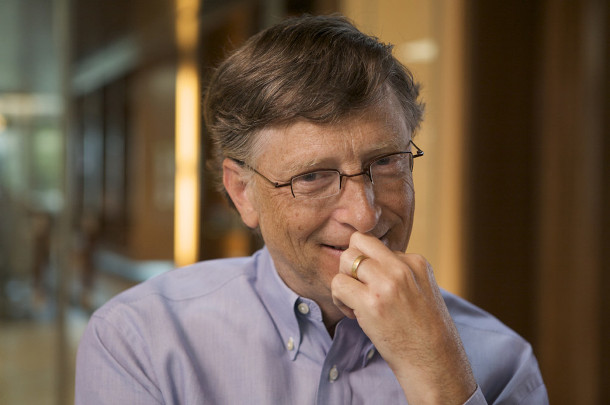
Bill Gates is Founder and Chairman of TerraPower. (Photo: Billionaires Success, Flickr, CC BY 2.0)
CURWOOD: What's the advantage?
BUONGIORNO: This particular feature is important these days, because there is a lot of variability on the grid for two reasons. First, because well, the demand for electricity on the grid is not constant, since people switch on their appliances in the morning, and then in the afternoon, you know, there is sort of peaks and valleys created by demand. But there is also quite a bit of variability on the grid because of the penetration of intermittent renewables like solar and wind. Sun doesn't always shine, wind doesn't always blow. So you have sort of again, ups and downs in what's generated, what the electricity is generated on the grid. And so this reactor, which is able to vary its power output, is particularly useful in that context.
CURWOOD: So you have a thermal battery with this design, so that you can store extra heat and use that to make electricity when you want to. And meanwhile, the reactor itself is creating a whole bunch of heat.
BUONGIORNO: That's a great way to put it. And in principle, you could change the amount of heat that is generated from the reactor itself. But that's not economically very attractive because a nuclear reactor, a nuclear power plant is essentially an expensive machine that burns cheap fuel. What that means is that it takes a lot of money to build the plant, and it doesn't take a lot of money to run it, to operate it. The implication of this is that once the plant is built, you want to always run it at 100% output. And again, this sort of is designed with liquid sodium allows you to keep that heat output constant, but to vary the electric output on the grid. And the location matters. This particular plant in southwestern Wyoming is located on a major transmission line that connects that site to California. California, again, is obviously a very big power market to begin with, but also a lot of variability because of their reliance on solar and wind. So the plan for this nuclear power plant in Wyoming is to sell significant amount of its electric output to California via that transmission line.
CURWOOD: This plant is being built where a coal fire plant once was, I guess that puts it at a good connection for the grid. What other advantages to being where a coal-fired power plant was?
BUONGIORNO: Many advantages, starting with the fact that communities that were relying on the economic footprint of those coal-fired plants now find themselves in a position to benefit from the new plant, right? So it’s jobs, it's tax revenues, it's overall economic impact. But strictly speaking from the point of view of the plant itself, you can reuse transmission lines, which we've already mentioned, you can also reuse cooling infrastructure, as well as access roads, administrative buildings. And lastly, the workforce has to be retrained because a coal plant is not the same as a nuclear plant. But in fact, a nuclear plant, everything else being the same, typically employs more people than a coal fire plant. So several advantages there.

TerraPower’s nuclear plant will be built near the site of a retiring coal plant in Kemmerer, Wyoming. (Photo: Jimmy Emerson, DVM, Flickr, CC BY-NC-ND 2.0)
CURWOOD: What public health advantages are there from this approach?
BUONGIORNO: That's another good side of the story, you know, coal fire plants, they've been keeping the lights on for decades, but they're now going out of business because of their environmental impact. They emit a lot of CO2, and it's a greenhouse gas, so it's associated with climate change. And so a reduction of those emissions is very, very important. And number two, if you just look cold blooded at number of casualties per unit electricity generated, even if you calculate the number of people that have been harmed by radiation in accidents, which is a very, very small number, there is no comparison. Coal plants unfortunately kill scores of people. In addition to CO2, they spew out in the atmosphere a lot of particulate and a lot of criteria pollutants, which cause respiratory problems. So as coal plants go out of business and are replaced by nuclear power plants, which don't have any such emissions, the quality of the air locally should also improve.
CURWOOD: Now, there's a lot of talk that this plant's reactor has a safer design than the current light water reactors. Your response?
BUONGIORNO: My response is, current light water reactors are extremely safe. They have a very good record. I wouldn't characterize these as safer, I would say it has a different safety approach. A vast majority of the reactors that we have been operating for the past few decades rely on what we call active safety philosophy. What that means is that if there is a failure or a malfunction, there is a number of engineer systems, powered by external energy sources, things like diesel generators or batteries or whatever it is that is required, to ensure that those engineer safety systems operate properly. That approach works, and it realizes a very, very safe system, but it's fairly complicated because it requires operator action, it requires to maintain those engineer safety systems in good shape. So there is cost and there is complexity associated with it. All the new reactor designs that are being contemplated now, including TerraPower, TerraPower is no exception, use a different safety philosophy or a safety approach, which we call passive safety. They don't rely on external energy sources to drive the safety systems. They rely on things like thermal siphoning, you know, natural circulation, gravity, pressure differences. So phenomena, physical phenomena that don't require an external input of energy from diesel generators, batteries, pumps or things of that type. What that means is that if there is a malfunction or a failure of components within the plant, even in case of a major disaster, like an earthquake, tsunami, a fire, terrorist attack, whatever it is, the operator, human operator does not have to intervene, does not have to launch the engineer safety systems. The safety systems would be able to run on their own, and so the expectation is that this overall is going to make for a more reliable, a more robust, a more human-error-tolerant system. So safe in both cases, just different approaches.
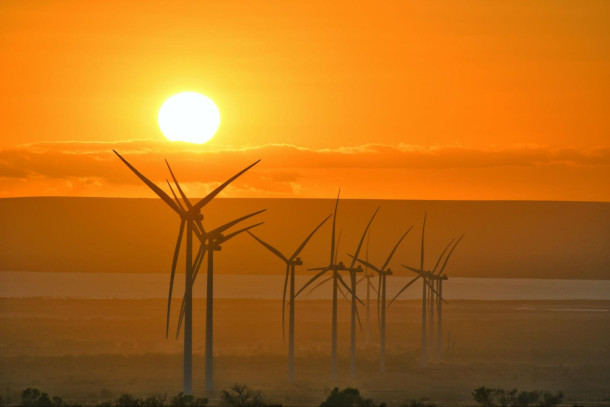
TerraPower’s variable output concept is designed to pair well with intermittent renewable energy sources. (Photo: John Morton, Flickr, CC BY-SA 2.0)
[MUSIC: Philip Boulding, “Ohana Kai (Family of the Sea)” on Musings-Celtic Harp Originals, by Philip Boulding, self-published]
CURWOOD: Just ahead, we continue our conversation with MIT professor Jacopo Buongiorno, and ask the question, what about the nuclear waste…. Keep listening to Living on Earth.
ANNOUNCER: Support for Living on Earth comes from Friends of Smeagull the Seagull and Smeagull’s Guide to Wildlife. It’s all about the wildlife right next door to you! That’s Smeagull, S - M - E - A - G - U - L - L, SmeagullGuide.org.
[CUTAWAY MUSIC: Goldspiel Provost – Classical Guitar Duo, “Danzas Espanolas - Villanesca” on Latin Magic, by Enrique Granados, gpd Records]
CURWOOD: It’s Living on Earth, I’m Steve Curwood.
We are back now with MIT nuclear physics and engineering professor, Jacopo Buongiorno.
I don't have statistics, but I know anecdotally, when one talks with people about nuclear power, inevitably they say, what about the waste? So what do you say?
BUONGIORNO: Yeah, waste has been a tough issue for nuclear all along, it still is, at least in the United States, simply because we don't have what people call the ultimate solution, the ultimate disposal site, okay? So first of all, what we call waste is really the spent fuel, it's the fuel that comes out of the reactor, which has sort of run out of juice, run out of its energy content, and it's become highly radioactive, okay? So what's done at the moment in the United States is we keep it very safely stored at the site, first in spent fuel pools, in water pools for several years. Radioactivity naturally decays, so its radioactive levels, so to speak, go from very high to significantly lower within a couple of years. And then they are moved from these pools into what people call dry casks. So these are canisters made of steel and concrete, highly engineered and well shielded. And at the moment, we have basically this material at the individual nuclear power plant sites. It is safe, it's relatively cheap to manage, we can continue to do this for decades. But eventually, all that material's got to go somewhere, it's got to be consolidated. The consensus is that it has to go underground. It's what people call a geological repository. And the issue we have in the U.S. is that we've been unable to find a site anywhere in our big country that will host that final repository. I keep saying “in the U.S.” because other countries have solved the problem. And the first country that is actually going to open a geological repository is Finland, that should happen either next year or the year after, between now and 2026. So they have a different political process, general public has a higher level of trust in their government. It's all about that. It's not a technical problem, it's never been really a technical problem, it's always been an issue with how you manage the process that leads to the selection, authorization, construction, and finally, operation of a geological repository.
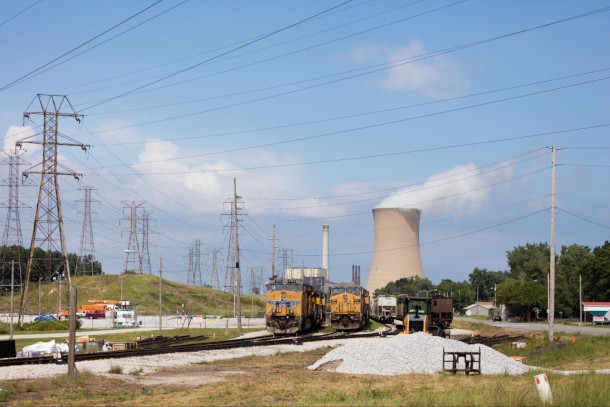
Coal plants emit both toxic particulate matter and greenhouse gases like CO2. Comparatively, nuclear plants do not have the same emissions. (Photo: Duncan Rawilson - Duncan co., Flickr, CC BY-NC 2.0)
CURWOOD: Professor, what's the volume of so-called nuclear waste right now in America? How big a space would it occupy if it were consolidated?
BUONGIORNO: That's actually one of the positive attributes about nuclear. It doesn't produce a lot of waste. And that's because the energy content of the material that we use as fuel, which is called uranium, is extraordinarily high. I mean, that's always been sort of the attractive feature of nuclear is that it doesn't require a lot of fuel to generate a lot of energy. The implication of this is that you also don't generate a lot of waste. Just to give you an idea, if a person like me and you were to use only nuclear energy, only nuclear electricity for all our life, the amount of spent fuel that we would produce would basically fit within a cup of coffee. Now, there is a lot of us. So if we all use nuclear energy, of course, the cups of coffee add up. But to give you another example, all the spent fuel, all the waste that we have produced now in the United States, over the past sixty years of operation of 100 reactors generating roughly 20% of our electricity, if consolidated, would basically fit on something that looks like a football field, for all the United States past sixty years, 20% of electricity. So the volumes are not large, but we got to put it somewhere. And that's been the challenge.
CURWOOD: Professor Buongiorno, do you want to briefly talk about breeder reactors and what might be done with so-called spent nuclear power plant fuel?
BUONGIORNO: So at the moment, the approach that we use in the United States, so called once-through fuel cycle, so the idea is that once that spent fuel comes out of the reactor, it's going to be disposed of, it's not going to be reprocessed, recycled, but it's interesting that you should ask because if you look from a technical point of view at the contents of that spent fuel, some of it is waste, but most of it still has a potential use as fuel in other reactors. And so you call them breeder reactors. A sodium-cooled reactor can be designed to be a breeder reactor. Breeder reactor is going to sound a little bit like magic, but it's not. It's a reactor that actually produces more fuel than it consumes. And it's done through the bizarre laws of nuclear physics and quantum physics. But it does work. It's not science fiction. It's very, very solid science. And so you can use the part of uranium which is our fuel, that is not utilized in traditional reactors, and turn that uranium into plutonium, which is good fuel for the breeder reactor itself. And so again, through a nuclear physics process, you can actually make more fuel than you're consuming. They were very much in vogue back in the 50s and 60s when people thought that we would run out of uranium and so there would be a need for sort of multiplying the utilization of uranium. We know now that uranium is very widespread on Earth, and it's pretty cheap. So I would say they've fallen out of favor, at least the United States, but there are other countries, Russia and China in particular, and even France, that are long-term committed to this idea that you could use breeder reactors.
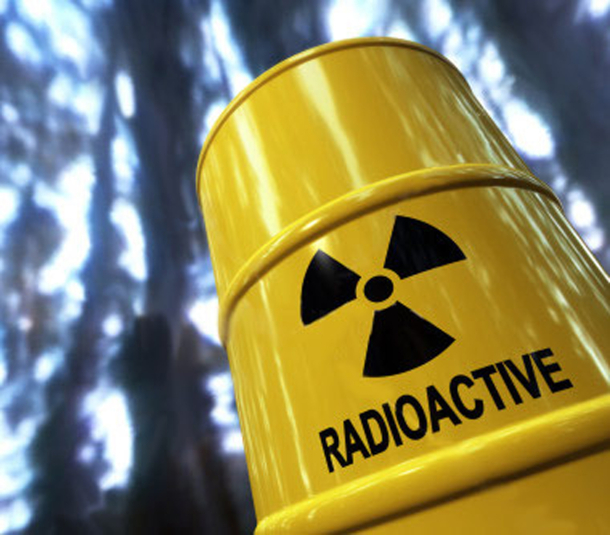
According to Professor Buongiorno, US nuclear power produces such a very low volume of radioactive waste all such waste produced in the last 60 years could fit in a single football field at a depth of about ten feet. (Photo: Green MPs, Flickr, CC BY-NC-ND 2.0)
CURWOOD: What about all the atomic weapons that people would like to see decommissioned? To what extent might that help the fuel situation for nuclear power reactors?
BUONGIORNO: Well, it did. There was a program that I think ended just a few years back, it was called megatons to megawatts. And under that program, a lot of the idea of rich uranium that was producing Russia for weapons, for nuclear weapons, was converted to lower enriched uranium and used in reactors around the world, in particular in the United States. So a lot of the warheads that were decommissioned under treaties between the U.S. and the former Soviet Union, and then Russia have actually, that material has made its way into the commercial domain and is being used that way. So if the great powers, shall we say, the great nuclear powers, U.S., Russia, and China decide that they want to reduce their arsenals, this scheme can be implemented again. But I don't need to tell you, Stephen, at the moment it's not looking particularly good on the international scene, right? The geopolitics are such that, if anything, I think we might see an increase in nuclear weapons, unfortunately.
CURWOOD: So what's the current public opinion about nuclear power? How do people feel about its safety and viability?
BUONGIORNO: Well, the interesting thing is, at least in the United States, the support for nuclear has always been pretty high. And when I say always, I mean, over the past 20 years, including just following the Fukushima accident. At the moment, it's at an all-time high, I've been in this community for 27 years, and I've never seen sort of numbers as they are now, I think low 70s. That's generic support by the public in the United States. I'm always sort of hesitant to translate that to, how can I say, solid support, either for nuclear or anything else, right? So there is a difference between generically supporting something and then supporting it when that something becomes a project in your town, in your county, right? There is the NIMBY, "not in my backyard" syndrome. And so, by the way, this applies to all technologies. You know, if you look at the support for solar and wind, it's off the charts, good, right? Everybody likes solar and wind. But then you look at the realization of big solar, wind, and transmission line projects in United States. And they keep running into serious issues of authorization and opposition from locals. And I would expect that if there was a push for a widespread increase of nuclear power plants around the United States, especially in new sites, sites that don't already have nuclear power plants, we might see a little bit of the same NIMBY response, but in general, it seems to be doing okay. And of course, it's also geographically dependent. Some states are more supportive than others.
CURWOOD: Talk to me about what's going on with trying to put a reactor that was closed a while ago in southwest Michigan back online. What's the story about that?
BUONGIORNO: Yeah, that's the Palisades nuclear power plant, single-unit pressurized water reactor, I think it's about 800 megawatts. It's relatively large, had been in operation for several decades, it actually had obtained a license extension from 40 years to 60 years, but for economic reasons, the company that owned it, used to own it, Entergy, decided to shut it down. But there was nothing wrong with the plant, it simply wasn't making money. And that site was purchased, literally, by another company called Holtec, which immediately decided that they would like to actually keep it up and running. And I think what what changed since the decision of the previous owner to shut it down and the decision of the new owner to restart it is, well, many things, most important of which is maybe prices have gone up for electricity. So what used to be economically not attractive now is economically attractive. But perhaps more importantly, the desire to reduce emissions. We've seen many, many times in the United States that when nuclear power plants shut down, the emissions in the state or states where they are located typically shoot up very, very quickly. So there is the environmental concern. And once again, there is the economic concern in terms of economic footprint locally. So there is a lot of good support by the state of Michigan. And as we learned last week, also good support by the federal government in the form of a loan of about $1.5 billion. So the schedule there is such that the plant should restart in 2025, so a year from now.
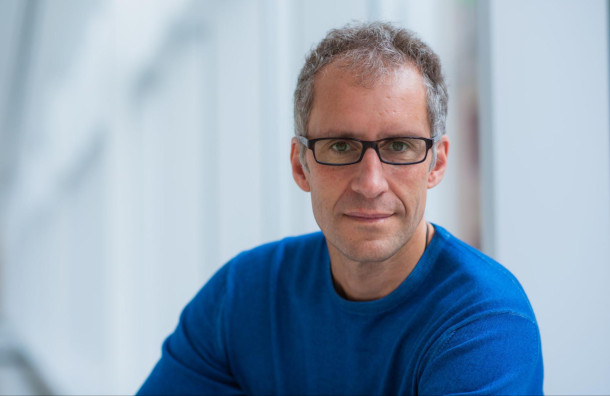
Jacopo Buongiorno is a professor of nuclear engineering at the Massachusetts Institute of Technology. (Photo: Courtesy of Jacopo Buongiorno)
CURWOOD: So to what extent do you think that this new TerraPower plant will spark a new era for nuclear energy? How's it going to deal with the present obstacles facing the nuclear energy power market here in the U.S. today?
BUONGIORNO: Well, I don't think it's one size fits all. In other words, while I like that project, I don't think it's just going to be that project that will propel nuclear forward, so to speak. It is an important part of it. It does address the question of increasing the economic attractiveness of nuclear on the grid, and again with the idea that you can vary your power output while maintaining sort of that full utilization of your reactor, that's a smart approach. So that's new. And if that's proven successful, I think that model might be followed. But there are other projects that are ongoing. They're all, in many ways, equally important because they address different applications, different sectors of the economy. So I think it's going to be a combination of these projects that will determine if nuclear is going to be successful or not in the U.S.
CURWOOD: Jacopo Buongiorno is a professor of nuclear science and engineering at the Massachusetts Institute of Technology. Thanks so much for taking the time with us today.
BUONGIORNO: My pleasure.
Links
Learn more about the U.S. Nuclear industry
Learn more about U.S. Nuclear Plants
Department of Energy’s Advanced Reactor Demonstration Program
Living on Earth wants to hear from you!
Living on Earth
62 Calef Highway, Suite 212
Lee, NH 03861
Telephone: 617-287-4121
E-mail: comments@loe.org
Newsletter [Click here]
Donate to Living on Earth!
Living on Earth is an independent media program and relies entirely on contributions from listeners and institutions supporting public service. Please donate now to preserve an independent environmental voice.
NewsletterLiving on Earth offers a weekly delivery of the show's rundown to your mailbox. Sign up for our newsletter today!
 Sailors For The Sea: Be the change you want to sea.
Sailors For The Sea: Be the change you want to sea.
 The Grantham Foundation for the Protection of the Environment: Committed to protecting and improving the health of the global environment.
The Grantham Foundation for the Protection of the Environment: Committed to protecting and improving the health of the global environment.
 Contribute to Living on Earth and receive, as our gift to you, an archival print of one of Mark Seth Lender's extraordinary wildlife photographs. Follow the link to see Mark's current collection of photographs.
Contribute to Living on Earth and receive, as our gift to you, an archival print of one of Mark Seth Lender's extraordinary wildlife photographs. Follow the link to see Mark's current collection of photographs.
 Buy a signed copy of Mark Seth Lender's book Smeagull the Seagull & support Living on Earth
Buy a signed copy of Mark Seth Lender's book Smeagull the Seagull & support Living on Earth

